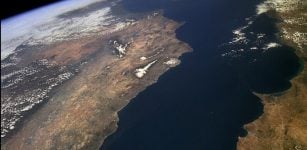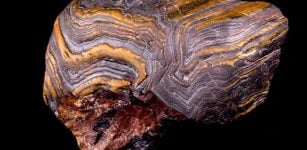Underwater Thousands Of Meters High Mountains Have Big Impact On Ocean Circulation
Eddie Gonzales Jr. – MessageToEagle.com – Colossal undersea mountains, towering up to thousands of meters high, stir up deep sea currents: impacting how our ocean stores heat and carbon.
Image credit: Schäferle – Pixabay
An international team, led by the University of Cambridge, used numerical modeling to quantify how underwater turbulence around these mountains, called seamounts, influences ocean circulation; finding it is an important mechanism in ocean mixing and one that is missing from climate models used in policymaking.
“The intense turbulence around seamounts makes them a major contributor to ocean mixing at a global scale, but we don’t have that process represented in climate models,” said Dr. Ali Mashayek from Cambridge’s Department of Earth Science, who led the study. The findings, which were published in the journal Proceedings of the National Academy of Sciences, could be used to improve model forecasts of how the ocean will respond to global warming.
The ocean is in perpetual motion, as if a massive giant conveyor belt: warm water from the tropics slowly moves toward the poles, where it cools and sinks thousands of meters into the ocean’s abyss, taking with it stored carbon, heat and nutrients.
This cold, heavy water must resurface, otherwise the ocean would fill with frigid water. But identifying where the power for this return flow comes from has been a major scientific challenge. The new study helps resolve this longstanding mystery, showing how seamounts aid ocean circulation.
Tens of thousands of undersea mountains, or seamounts, lie at the bottom of the ocean, but that figure is likely to be much larger because only a quarter of the seabed has been mapped.
Seamounts are obstacles for deep sea currents. Water roars over their steep slopes—creating spiraling wake vortices that carry water toward the surface. “The deep waters around a seamount are chaotic and turbulent,” said Mashayek, “the turbulence churns up the ocean just like stirring milk into your coffee.” That stirring helps pull deep and heavy water to the surface; completing a circuit that the keeps the ocean flowing.
Deep-sea turbulence has been measured around seamounts before, but scientists weren’t previously sure how important this process was in ocean circulation once extrapolated to the entire ocean. According to Mashayek and the team, the stirring around seamounts contributes to about a third of ocean mixing globally. The contribution was greater, at around 40%, in the Pacific Ocean, where there are more seamounts.
The Pacific is the largest store of heat and carbon. It’s generally thought that deep water in the Pacific Ocean takes several thousand years to resurface, “but if seamounts are enhancing mixing, particularly in large carbon stores like the Pacific, then the timescale of storage could be shorter and if carbon is released sooner that could speed climate change,” said co-author Dr. Laura Cimoli from Cambridge’s Department of Applied Mathematics and Theoretical Physics.
Mashayek and his colleagues aren’t the first to suggest that seamounts could be critical to ocean circulation. Back in the 1960s the famed oceanographer Walter Munk theorized that seamounts might be “the stirring rods of the ocean.” Since then, oceanographers have probed waters around seamounts and measured this turbulent flow directly.
“But what was missing from the picture was a measure of how much this mattered at a global scale,” said co-author Professor Alberto Naveira Garabato, from the University of Southampton. “The only reason we’ve been able to put this to the test now is that we only recently had enough of the seafloor mapped. The number of seamounts is likely to be even larger, so our estimates of their importance in mixing are still conservative.”
The team now plan to incorporate the physics of seamount-induced turbulence into climate models, helping improve forecasts of how climate change could impact the ocean’s carbon and heat storage. “The bottom line is, to know how the ocean is adjusting to climate change, we need to have a realistic representation of deep ocean circulation. We’re now a step closer toward that,” said Mashayek.
Written by Eddie Gonzales Jr. – MessageToEagle.com Staff Writer











